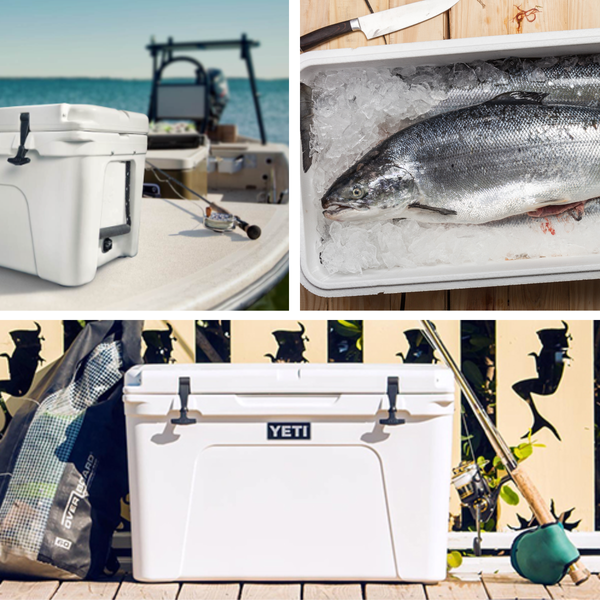Key Takeaways:
- Inspection cameras are versatile tools that can be used in a variety of settings, from plumbing to electrical inspections.
- These cameras allow for non-invasive examinations, saving time and money by identifying issues without the need for destructive measures.
- With advancements in technology, inspection cameras now come with features like LED lights, image rotation, and WiFi connectivity, enhancing their functionality.
Inspection cameras, often referred to as snake cameras or sewer cameras, have revolutionized the way professionals and DIY enthusiasts approach maintenance and inspection tasks. These nifty devices provide a set of eyes where the human eye cannot reach, making them an invaluable asset in numerous applications. This article will delve into the myriad of uses for inspection cameras, highlighting their importance in various industries and scenarios.
The Basics of Inspection Cameras
An inspection camera is a valuable tool that consists of a camera head attached to a flexible shaft, which is then connected to a display screen. This setup allows users to navigate the camera through tight spaces and hard to reach areas, providing a live feed of what lies beyond the naked eye. With features like LED lights for illumination and SD card slots for recording video, these cameras are equipped to tackle a range of inspection challenges.

Plumbing Perfection: Sewer and Pipe Inspections
One of the most common uses for inspection cameras is in the plumbing industry. Sewer inspection cameras and pipe inspection cameras are specifically designed to run pipes and inspect sewer lines. They help in identifying areas that may require maintenance or have potential defects, such as blockages or breaks. This remote visual inspection method prevents the need for invasive procedures, saving homeowners from costly repairs and extensive property damage.
Electrical Inspections Made Easy
For electricians, digital inspection cameras are just the tool for inspecting wires and other components within walls or ceilings. They can safely navigate through electrical conduits, identifying potential hazards without the risk of shock or disturbing existing wiring. This non-invasive approach is of utmost importance for both safety and efficiency.
Automotive Repair and Maintenance
Automotive technicians frequently use inspection cameras to peer into the internal components of vehicles. Whether it's to check for engine issues, inspect brake systems, or verify the condition of hard-to-reach parts, these cameras save time and provide a better understanding of the vehicle's condition without the need for complete disassembly.
Industrial Inspections at Their Finest
In industrial settings, inspection cameras play a crucial role in ensuring machinery and equipment are functioning correctly. They allow for detailed inspections of gears, valves, and other internal machinery components. Industrial inspections often require cameras with robust features like high-resolution imaging, image rotation, and the ability to withstand harsh environments.

The Art of Non-Invasive Exploration with Inspection Cameras
Inspection cameras have revolutionized the way we approach non-invasive exploration in various fields. Whether it's peering into the intricate pathways of electrical wiring or navigating the labyrinth of sewer systems, these devices offer a glimpse into areas that were once considered inaccessible. With the right tool, such as a snake camera or a sewer inspection camera, professionals can diagnose issues without the need for disruptive and costly exploratory methods. This not only saves money but also time, making the inspection process more efficient and less intrusive.
The versatility of these cameras is further enhanced by their design. Features like a flexible insertion tube and a push rod allow for navigation through tight bends and hard-to-reach places, providing clear images from different angles. Safety glasses are no longer the only protective gear needed when inspecting pipes or conduits; the remote viewing capabilities of these cameras ensure that professionals can maintain a safe distance while conducting thorough inspections. This technological leap has made it possible to minimize risk while maximizing the effectiveness of diagnostic procedures.
Streamlining Maintenance and Repairs with Advanced Pipe Cameras
When it comes to maintaining and repairing infrastructure, the use of a pipe inspection camera can be a game-changer. For instance, inspecting pipes in a residential or commercial building is no longer a guessing game. A sewer camera can swiftly identify blockages, cracks, and other issues within the plumbing system. This precision allows for targeted repairs that can prevent larger problems down the line. By choosing to use a sewer inspection camera, property owners and service professionals can avoid the disruption and expense of unnecessary excavation.
Moreover, these advanced pipe cameras are not just for professionals. The DIY enthusiast can also benefit from this technology. With a compact and user-friendly design, many inspection cameras are suitable for home use, enabling the savvy homeowner to undertake their own inspections. Whether it's checking for clogs in drain lines or ensuring that the gutters are clear of debris, a sewer camera can be the right tool for the job. By incorporating these cameras into regular maintenance routines, homeowners can detect potential issues early on and take proactive steps to address them, ultimately saving money and preserving the integrity of their home.

Exploring Hard-to-Reach Places with Inspection Cameras
Inspection cameras are not just tools for professionals; they are also perfect for exploring areas that are typically out of sight and hard to reach. Whether you're a homeowner trying to find a lost item behind a heavy piece of furniture or a mechanic peering into the depths of an engine compartment, these cameras provide a glimpse into the unknown. With flexible cables and small camera heads, they can navigate through tight spaces, providing clear images on a connected display. This capability makes them invaluable for diagnosing issues without the need for immediate disassembly or invasive measures.
The versatility of inspection cameras extends to outdoor adventurers and scientists alike. Biologists, for example, can use these cameras to study animal burrows or inspect nests without disturbing the natural habitat. Similarly, cavers and spelunkers can preview narrow passages before squeezing through. By using an inspection camera, they can ensure safety and plan their route more effectively. The ability to see into hard-to-reach places opens up a world of possibilities for discovery and understanding, all without causing unnecessary disruption.
Unveiling New Horizons: Inspection Cameras in Innovative Applications
Inspection cameras are not just tools for traditional inspections; they're gateways to exploring new horizons in various fields. When pondering over "what can I use an inspection camera for," consider the realm of conservation and archaeology. These cameras serve as non-invasive methods to study fragile historical artifacts or to navigate ancient structures. By slipping into the tiniest crevices, they provide a glimpse into the past without risking damage to priceless treasures.
Moreover, in the world of scientific research, inspection cameras are indispensable. They can be maneuvered into hard to reach places within experimental setups or natural habitats, capturing images and data that were once impossible to obtain. Whether it's monitoring the behavior of a rare species in its burrow or observing chemical reactions in confined spaces, these cameras are revolutionizing the way we gather information.
Inspection Cameras: A Cost-Effective Solution for Maintenance and Repairs
When it comes to maintenance and repairs, using an inspection camera can save money by pinpointing problems before they escalate. For homeowners, a quick look inside a clogged drain with a pipe camera can reveal the nature of the blockage, allowing for targeted solutions that avoid costly plumbing bills. Similarly, in the context of sewer inspections, these cameras can identify issues like pipe damage or root intrusion, enabling repairs to be made before a full-blown sewer backup occurs.
In the medical field, inspection cameras serve as non-invasive tools that can reduce the need for exploratory surgery, thus saving on hospital costs and recovery time for patients. These medical devices provide doctors with internal visuals that are crucial for diagnoses and treatment plans. For instance, an endoscope, which is a type of inspection camera, allows gastroenterologists to inspect a patient's gastrointestinal tract without a single incision. This non-invasive approach not only saves money but also improves patient comfort and outcomes.

Home Inspections for Prospective Buyers
Home inspectors utilize inspection cameras to assess the condition of a property before a sale. These cameras can reveal issues behind walls, in ceilings, or under floors, providing prospective buyers with detailed information about the property's state. This can influence purchasing decisions and help negotiate repair costs.
HVAC Technicians' Best Friend
HVAC technicians rely on inspection cameras to examine ductwork and other inaccessible areas. These cameras can identify blockages, leaks, and other issues that could affect the system's efficiency. By using an inspection camera, technicians can diagnose problems without dismantling the entire system, saving both time and money.
Medical and Veterinary Applications
In the medical and veterinary fields, inspection cameras can serve as non-invasive tools to examine internal organs and diagnose health issues. These medical devices, similar to endoscopes, allow doctors and veterinarians to perform internal examinations with minimal discomfort to the patient.
The instruments used for these applications are similar to what you can find on Amazon, but the medical device grade solutions found in a medical facility or veterinarian's office are vastly superior to those available online.
Pest Control: Identifying Unseen Invaders
Pest control professionals use inspection cameras to locate nests and entry points for rodents and insects. These cameras can navigate through small openings and provide visual evidence of infestations, allowing for targeted treatment and minimizing the use of excessive force or chemicals.
Ensuring Safety with Remote Visual Inspections
In environments where safety is an important factor, such as chemical plants or construction sites, inspection cameras offer a way to conduct visual inspections without putting personnel at risk. They can be used to check for structural integrity, potential chemical leaks, or other safety concerns from a safe distance.

The DIY Enthusiast's Companion for Home Projects
For those who love tackling home projects, an inspection camera is a great tool to have in the toolbox. It can help in identifying areas that need repair, such as leaky pipes or faulty wiring, and provide a visual guide for making precise adjustments or fixes.
Summary
Inspection cameras are a testament to the power of technology in enhancing our ability to see and diagnose problems in inaccessible spaces. From plumbing to electrical work, automotive repair to industrial maintenance, these cameras provide a non-invasive, cost-effective solution for a multitude of inspection needs. With their ability to save time, prevent serious damage, and even save lives in medical applications, it's clear that inspection cameras are more than just a convenience—they're a necessity in today's world.
FAQ Section
Q: Can inspection cameras be used to record video for later review?
A: Yes, many inspection cameras come with the capability to record video onto an SD card, allowing inspectors and technicians to review the footage at a later time for a more detailed analysis.
Q: Are inspection cameras only useful for professionals, or can DIY enthusiasts benefit from them as well?
A: While professionals in various industries heavily use inspection cameras, they are also an incredibly useful tool for DIY enthusiasts. They can help in home inspections, identifying potential problems, and making home projects easier and safer.
Q: How do inspection cameras help in preventing costly repairs?
A: By allowing inspectors to visually assess the condition of pipes, electrical systems, and other components without the need for destructive measures, inspection cameras can identify issues early on. This early detection can prevent the escalation of minor problems into major, costly repairs.










